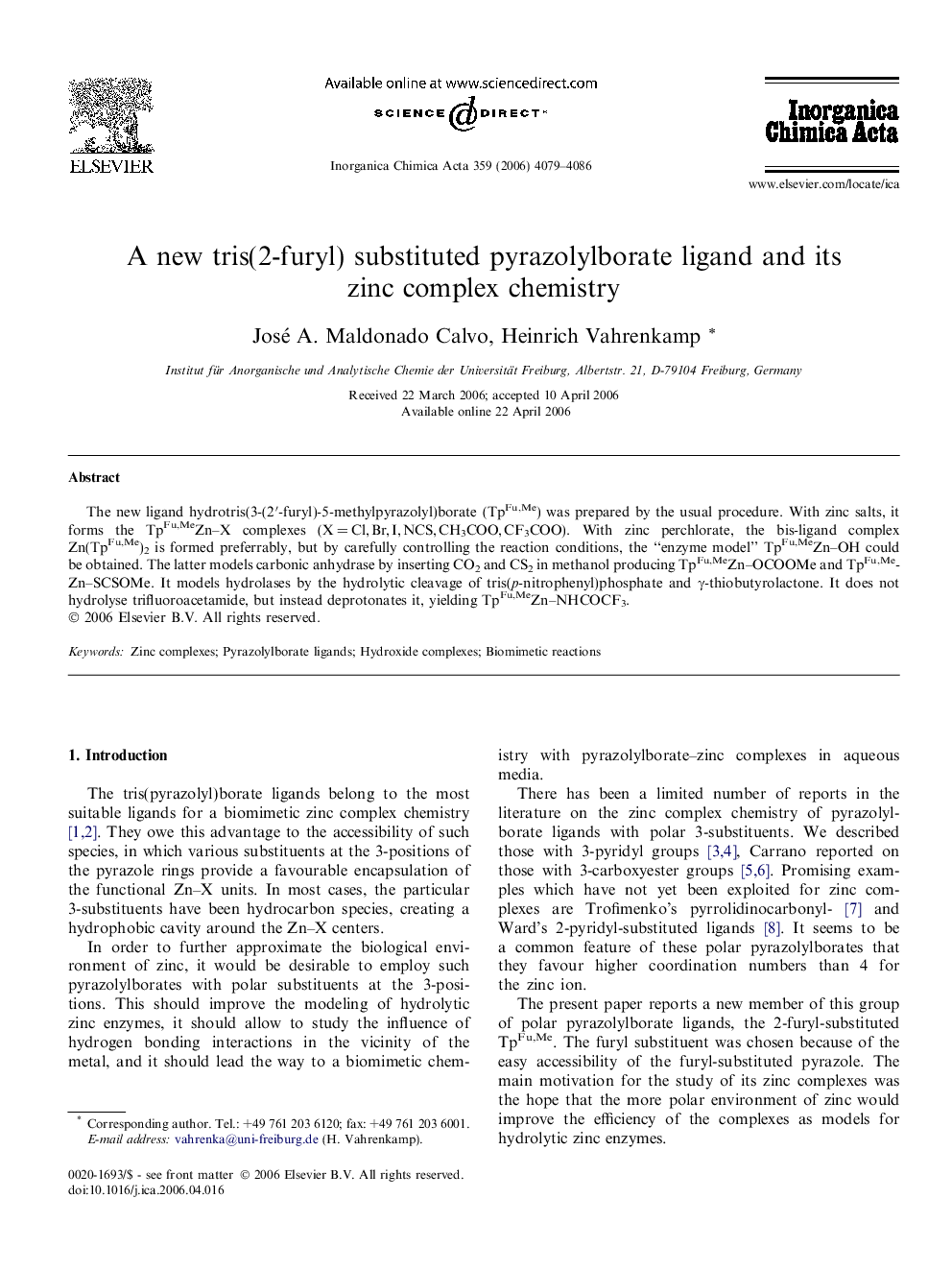| کد مقاله | کد نشریه | سال انتشار | مقاله انگلیسی | نسخه تمام متن |
|---|---|---|---|---|
| 1312929 | 975512 | 2006 | 8 صفحه PDF | دانلود رایگان |

The new ligand hydrotris(3-(2′-furyl)-5-methylpyrazolyl)borate (TpFu,Me) was prepared by the usual procedure. With zinc salts, it forms the TpFu,MeZn–X complexes (X = Cl, Br, I, NCS, CH3COO, CF3COO). With zinc perchlorate, the bis-ligand complex Zn(TpFu,Me)2 is formed preferrably, but by carefully controlling the reaction conditions, the “enzyme model” TpFu,MeZn–OH could be obtained. The latter models carbonic anhydrase by inserting CO2 and CS2 in methanol producing TpFu,MeZn–OCOOMe and TpFu,MeZn–SCSOMe. It models hydrolases by the hydrolytic cleavage of tris(p-nitrophenyl)phosphate and γ-thiobutyrolactone. It does not hydrolyse trifluoroacetamide, but instead deprotonates it, yielding TpFu,MeZn–NHCOCF3.
The new ligand hydrotris(3-(2′-furyl)-5-methylpyrazolyl)borate (TpFu,Me) has been prepared and converted to simple zinc complexes. The “enzyme model” TpFu,MeZn–OH inserts CO2 and CS2 and effects hydrolysis of tris(p-nitrophenyl)phosphate and γ-thiobutyrolactone. It does not hydrolyse trifluoroacetamide, but instead deprotonates it.Figure optionsDownload as PowerPoint slide
Journal: Inorganica Chimica Acta - Volume 359, Issue 12, 1 September 2006, Pages 4079–4086